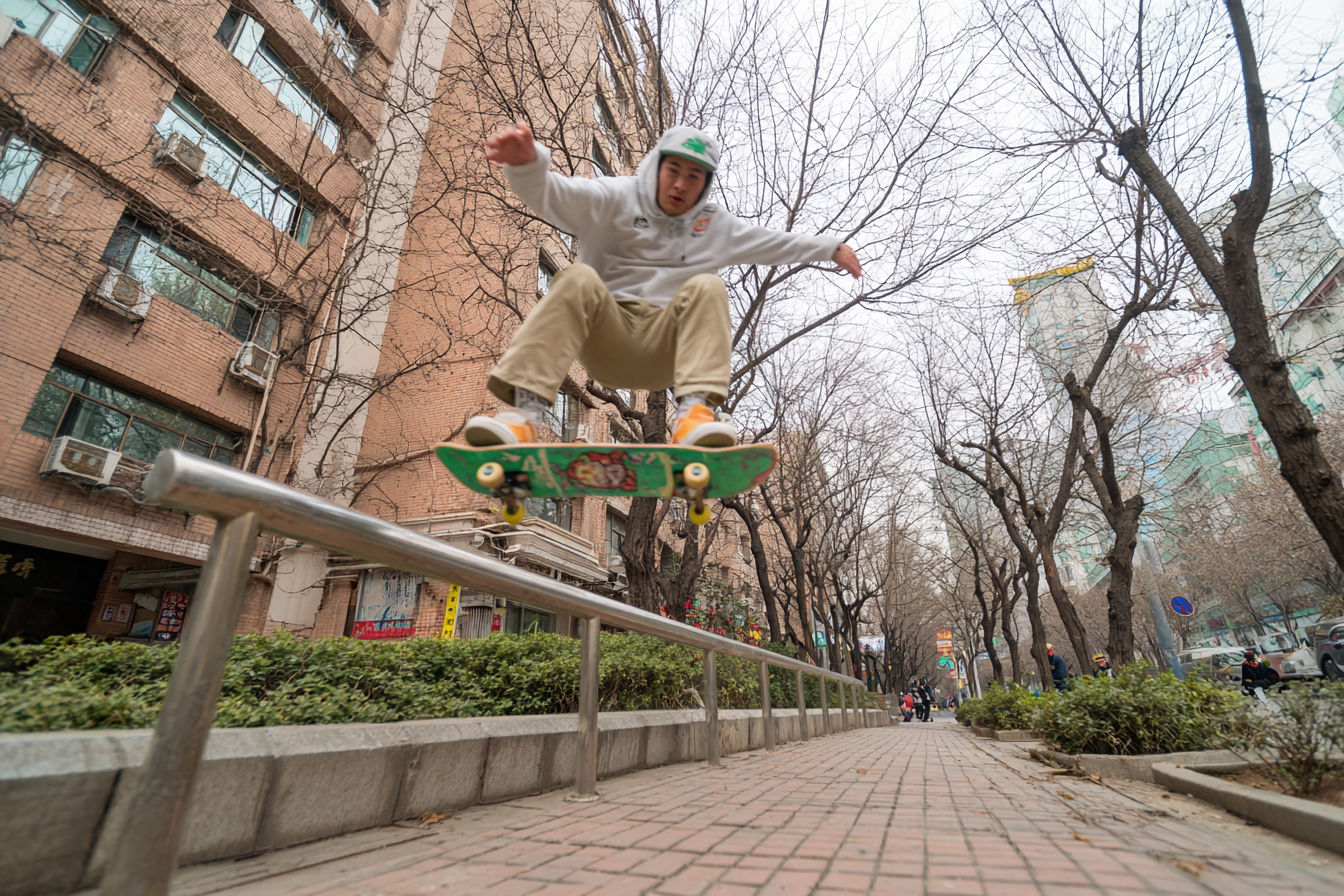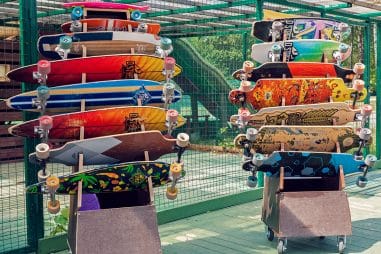Balance is undoubtedly the cornerstone of advanced skateboarding. Whether you’re cruising through a street course or attempting complex tricks at the skatepark, maintaining control over your board is critical. Mastering balance techniques doesn’t just improve your performance; it builds the confidence to tackle new challenges and develop your own style. In this article, we’ll explore advanced skateboarding balance techniques, the muscle groups involved, exercises to refine your stability, and equipment tips to help you stay steady on any terrain.
The Role of Balance in Advanced Skateboarding
Balance is fundamental to almost every aspect of skateboarding, especially at advanced levels where tricks require precise control and adaptability. When you perform flips, slides, or grinds, your ability to keep the board aligned with your body’s center of gravity allows for smooth execution. Good balance helps you absorb shocks from landing and navigate uneven surfaces without falling. Essentially, balance acts as the foundation upon which every trick and maneuver is built; without it, even the most basic moves become a struggle.
Moreover, effective balance isn’t just about standing still; it’s dynamic. You need to shift your weight, adjust your stance, and respond instantly to changes in terrain and board movement. This fluid balance enhances flow, allowing tricks to link seamlessly, making your skateboarding look both effortless and controlled.
Core Muscle Groups Essential for Maintaining Balance
Strong core muscles play an irreplaceable role in skateboarding balance. The core includes not only the abs but also the obliques, lower back, and pelvic muscles. These muscles stabilize your torso, enabling you to maintain posture and control when the board moves beneath you.
Besides the core, other muscles that contribute to balance include:
- Leg muscles: Quadriceps, hamstrings, calves, and hip muscles maintain your stance and adjust your weight distribution.
- Gluteal muscles: Provide stability and power, essential when carving or performing ollies and kickflips.
- Foot and ankle stabilizers: Small muscles in your feet and ankles help you make fine adjustments to the board’s tilt and position.
Strengthening these muscles directly improves your ability to stay centered and responsive while riding.
Exercises and Drills to Enhance Balance on the Board
To improve balance, you don’t necessarily need to increase skateboarding time alone. Dedicated drills and off-board exercises can accelerate your progress.
- Balance Board Training: Utilize a balance board or wobble board to practice stability. This tool mimics the unstable surface of a skateboard and encourages your body to react quickly to maintain equilibrium.
- Single-Leg Stands: Practice standing on one foot with eyes open, then progress to closing your eyes. This strengthens the stabilizing muscles in your feet and ankles.
- Core Workouts: Incorporate planks, Russian twists, and leg raises to strengthen your core muscles, enhancing your posture on the board.
- Yoga and Pilates: Both disciplines improve flexibility, balance, and body awareness, all crucial for advanced skateboarding.
- Skateboard Push and Glide: Practice pushing off and gliding with one foot on the board while balancing, building confidence and control over your stance.
Drills performed regularly can help re-train your body to maintain balance during dynamic movements, making complex tricks less daunting.
Using Balance to Improve Trick Execution and Flow
Once you have a solid balance foundation, its application can make a dramatic difference in how you perform tricks. Good balance helps in maintaining control mid-air, landing smoothly, and transitioning between tricks seamlessly. Flow is the ability to combine tricks fluidly, and it hinges on your capacity to keep balance throughout these continuous movements.
For instance, when approaching a manual (wheelie) or a grind, you must carefully adjust your weight to stay centered over the board. If your balance is off, you’ll either tip over or lose momentum. The mastery of tiny weight shifts allows you to extend the duration of manuals or hold grind positions longer. Balanced skating looks graceful and effortless, winning over judges in competitions or simply impressing fellow skaters.
Advanced Balance Techniques: Manuals, Nose Manuals, and Pivot Stalls
Advanced skateboarding demands proficiency in specialized balance techniques. Here are some of the key moves that push your balance skills to new heights:
- Manuals (Wheelies): Balancing on the back wheels while keeping the front elevated, manuals require precise weight control and strong core engagement. Prolonging manuals enhances flow and control.
- Nose Manuals: The reverse of manuals, nose manuals have you balancing on the front wheels. These are more challenging because your body weight naturally leans backward, so developing fine control here underscores advanced balance mastery.
- Pivot Stalls: This trick involves rotating on one set of wheels, requiring you to maintain balance while your board pivots. It sharpens your ability to manage weight distribution and board positioning simultaneously.
Regularly practicing these helps build your proprioception—the sense of your body’s position in space—which is crucial for all skateboarding maneuvers.
Equipment Tips to Aid Balance (Board Setup, Wheels, Trucks)
Your skateboard setup can either enhance or hinder your balance capabilities. Here are some equipment considerations to help you maintain better stability:
- Deck Width: A wider deck provides more foot space, making balance easier especially during manuals and stalls. Many advanced riders choose boards around 8.0 inches or wider depending on their style.
- Trucks: Properly adjusted trucks can improve responsiveness. Slightly tighter trucks offer more stability, while looser trucks give more maneuverability but require greater balance.
- Wheel Size and Hardness: Softer wheels absorb more vibrations from rough terrain, making balance easier outdoors. Larger wheels provide smoother rides but might slightly affect trick execution.
- Grip Tape: Keep it fresh and tacky; good grip is crucial for confident foot placement and balance.
Regularly tuning your board to match your preferences and terrain can make balancing feel more natural and less fatiguing.
Common Mistakes to Avoid While Practicing Balance
Even experienced skaters can fall into habits that undermine balance improvement:
- Rigid Posture: Stiff bodies reduce your ability to absorb shocks or adjust quickly. Stay relaxed but engaged.
- Looking Down at Feet: Focusing on your feet instead of the direction you want to go disrupts balance and flow. Keep your gaze forward.
- Neglecting Core Training: Building leg strength alone is not enough; weak core muscles limit your control.
- Overdoing It: Pushing too hard without rest can fatigue muscles, decreasing balance and increasing injury risk.
- Ignoring Equipment Setup: Using worn grip tape or improperly adjusted trucks will sabotage your balance efforts.
Avoiding these pitfalls ensures your balance training translates into real skateboarding progress.
Benefits of Balance Mastery Beyond Skateboarding
Improving balance through skateboarding carries benefits that extend well beyond the sport. A strong core and excellent balance reduce your risk of injuries in daily life by enhancing posture and coordination. It also improves agility and body awareness, which are valuable in many physical activities and sports. Mental benefits include increased focus and confidence—qualities that help you stay calm and composed under pressure in any situation.
Skateboarding balance training also encourages perseverance and patience, transferable traits for personal growth and overcoming challenges both on and off the board.
Integrating Balance Techniques into Daily Practice
To truly master advanced skateboarding balance, consistency is key. Integrating balance drills, strength training, and focused skate sessions into your daily routine accelerates progress. Start with warm-ups targeting your core and leg muscles, then move into balance-specific exercises off and on your board. Challenge yourself with manuals, nose manuals, and pivot stalls regularly, gradually increasing difficulty and duration.
Track your improvements and adjust your board setup as needed to keep balance practice fresh and effective. Remember, the goal is not just to complete tricks but to cultivate smooth, confident control across all aspects of skating.
By prioritizing balance in your training regimen, you’ll unlock a new level of skateboarding performance and enjoy a more fluid, expressive style that reflects your skills and passion.







